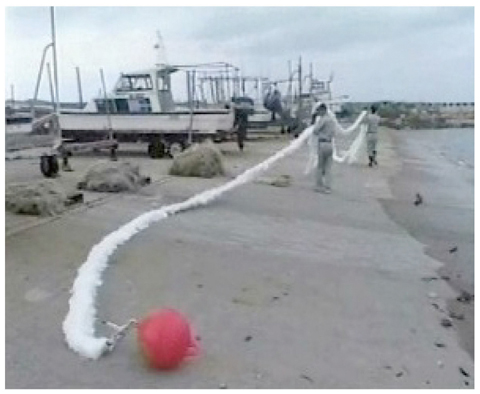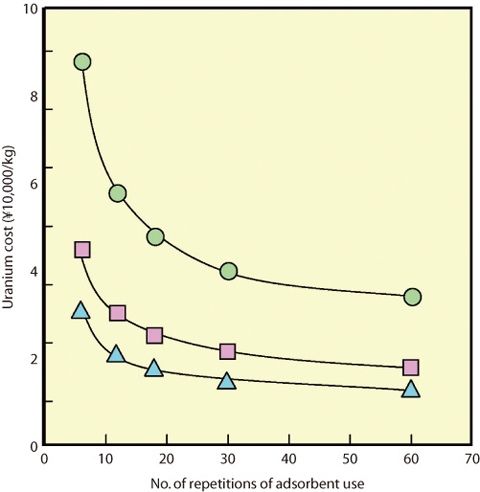
Fig.4-12 Preparing braided adsorbent for mooring on sea bottom

Fig.4-13 Effect of repeated usage of the braided adsorbent on the cost of uranium collection
All the necessary uranium fuel for power generation in Japan is imported, though nuclear power generation supplies 34% of the electric power in Japan. When the collection of uranium in seawater is commercialized, the energy security of our country would become stronger, and would allow extra time for the completion of an ideal nuclear fuel cycle system.
The total amount of uranium in seawater is 4.5 billion tons though the concentration is very low, 3.3 ppb (3.3mg-U in one ton of seawater). This total amount is 1000 times of all the underground uranium. Moreover, the annual amount of the uranium carried by the Black Current, flowing near Japan, is estimated at 5.2 million tons. When 0.2% of this uranium is collected, it would be enough for all the nuclear power generation in Japan.
The collection of uranium from seawater has been developed by JAEA. A pilot scale experiment in the sea revealed that a braided adsorbent was effective to achieve a reasonable cost for the uranium collection from seawater. The adsorption ability of the braided adsorbent (Fig.4-12) was evaluated in the sea area of Okinawa to obtain the necessary data for cost estimation. The collection cost of uranium from seawater was calculated at the present and the expected level of adsorbency (Fig.4-13). In this estimation, the annual scale of uranium collection was set to 1200 t/y which corresponds to the uranium amount consumed by six nuclear plants.
If 2g-U/kg-adsorbent is submerged for 60 days at a time and used 6 times, the uranium cost is calculated to be 88,000 yen/kg-U, including the cost of adsorbent production, uranium collection, and uranium purification. When 6g-U/kg-adsorbent and 20 repetitions or more becomes possible, the uranium cost reduces to 15,000 yen. This price level is equivalent to that of the highest cost of the minable uranium. The lowest cost attainable now is 25,000 yen with 4g-U/kg-adsorbent used in the sea area of Okinawa, with 18 repetitionuses. In this case, the initial investment to collect the uranium from seawater is 107.7 billion yen, which is 1/3 of the construction cost of a one million-kilowatt class nuclear power plant.